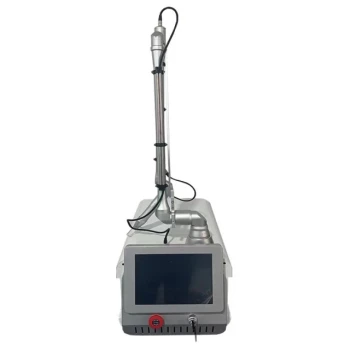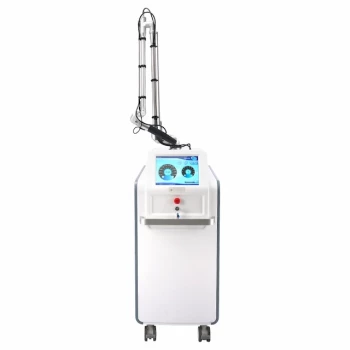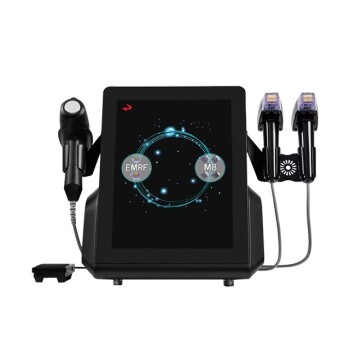For optimal results, fractional CO2 laser treatments should be spaced four to six weeks apart. This specific interval is not arbitrary; it is designed to align with your skin's natural healing and collagen-building cycle, ensuring each session builds effectively on the last without compromising safety or results.
The crucial insight is that the waiting period between fractional CO2 laser sessions is not downtime—it is an active and essential phase of the treatment. True skin remodeling happens in the weeks following the procedure, and interrupting this biological process by treating too soon can undermine the very results you seek.
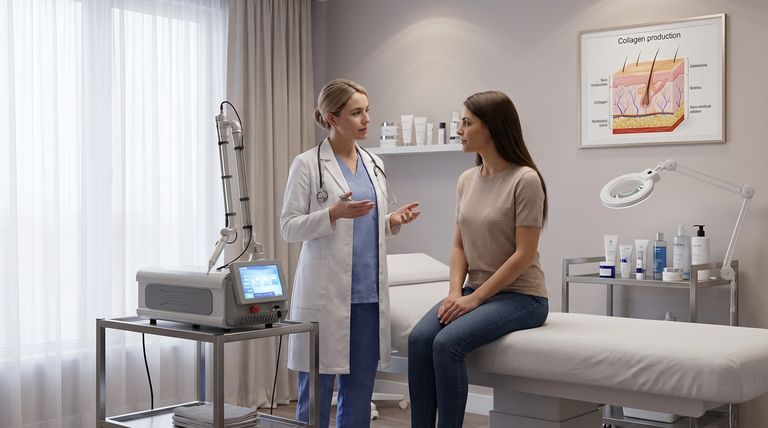
Why This Timing is So Critical
Understanding the "why" behind the 4-6 week rule empowers you to be a better partner in your own treatment plan. The laser itself is just the catalyst; your body's response is what creates the transformation.
The Skin's Remodeling Cascade
A fractional CO2 laser creates thousands of microscopic treatment zones, triggering a controlled wound-healing response. This process unfolds in stages over several weeks.
The initial recovery you see—reduced redness and peeling—is only the beginning. The most important work is happening deep within the dermis.
Neocollagenesis: The True Goal of Treatment
The primary goal of the laser is to stimulate neocollagenesis, the creation of new, healthy collagen. This is what smoothes wrinkles, tightens skin, and revises scars.
This collagen production process does not happen overnight. It ramps up significantly in the weeks following the treatment as your body works to repair the microscopic channels.
Aligning Treatment with Biology
The 4 to 6-week window is the sweet spot. It allows your skin to complete the most intense phase of repair and collagen synthesis from the previous session.
Performing another treatment during this critical period can disrupt the delicate network of newly forming collagen, effectively slowing down or even reversing your progress.
Understanding the Trade-offs
Deviating from the recommended schedule has clear consequences. This isn't about convenience; it's about the fundamental mechanism of the treatment.
The Risk of Treating Too Soon
Spacing sessions closer than four weeks apart is the most significant risk. It dramatically increases the potential for complications.
This includes disrupting collagen regeneration, leading to suboptimal results, and increasing the risk of prolonged redness, texture changes, and post-inflammatory hyperpigmentation (PIH).
The Consequence of Waiting Too Long
Waiting significantly longer than six to eight weeks between sessions is not dangerous, but it can be less efficient.
You may lose the powerful cumulative effect where each treatment builds directly upon the collagen foundation laid by the one before. This could mean you require more sessions overall to achieve your desired outcome.
Factoring in Treatment Intensity
The 4-6 week guideline applies to standard fractional CO2 laser treatments. A very aggressive, fully ablative CO2 resurfacing may require a single treatment followed by months of healing.
Conversely, a very light "lunchtime" fractional laser with minimal downtime might have a slightly different protocol. Always confirm the plan for your specific device and treatment settings with your provider.
How to Determine Your Optimal Schedule
While the 4-6 week interval is the clinical standard for a treatment series, your long-term plan will depend on your goals.
- If your primary focus is correcting significant concerns (deep wrinkles or acne scars): Adhering strictly to a series of 3-5 treatments spaced 4-6 weeks apart is crucial to maximize cumulative collagen building.
- If your primary focus is general rejuvenation and texture improvement: An initial series followed by a single maintenance session every 1-2 years is often an effective long-term strategy.
- If your primary focus is prioritizing safety above all: Always err on the side of waiting longer. Pushing a session a week or two later is far safer than rushing it a week or two earlier.
Ultimately, respecting your skin's biological clock is the key to unlocking the full potential of this powerful treatment.
Summary Table:
| Factor | Recommendation | Why It Matters |
|---|---|---|
| Standard Interval | 4-6 weeks | Aligns with the skin's natural collagen-building cycle for cumulative results. |
| Risk of Too Soon | < 4 weeks | Can disrupt collagen regeneration, increasing risk of hyperpigmentation and poor outcomes. |
| Consequence of Too Long | > 8 weeks | May reduce the cumulative effect, potentially requiring more sessions overall. |
| Long-Term Maintenance | Every 1-2 years | A single session after an initial series helps maintain rejuvenation benefits. |
Ready to build a safe and effective treatment plan for your clinic?
At BELIS, we specialize in providing medical aesthetics clinics and premium beauty salons with professional fractional CO2 laser equipment. Our devices are engineered for precise control and reliable performance, enabling you to deliver optimal, safe results for your clients.
Let us help you enhance your service offerings and grow your business.
Contact our experts today to discuss the best laser solutions for your practice.
Visual Guide
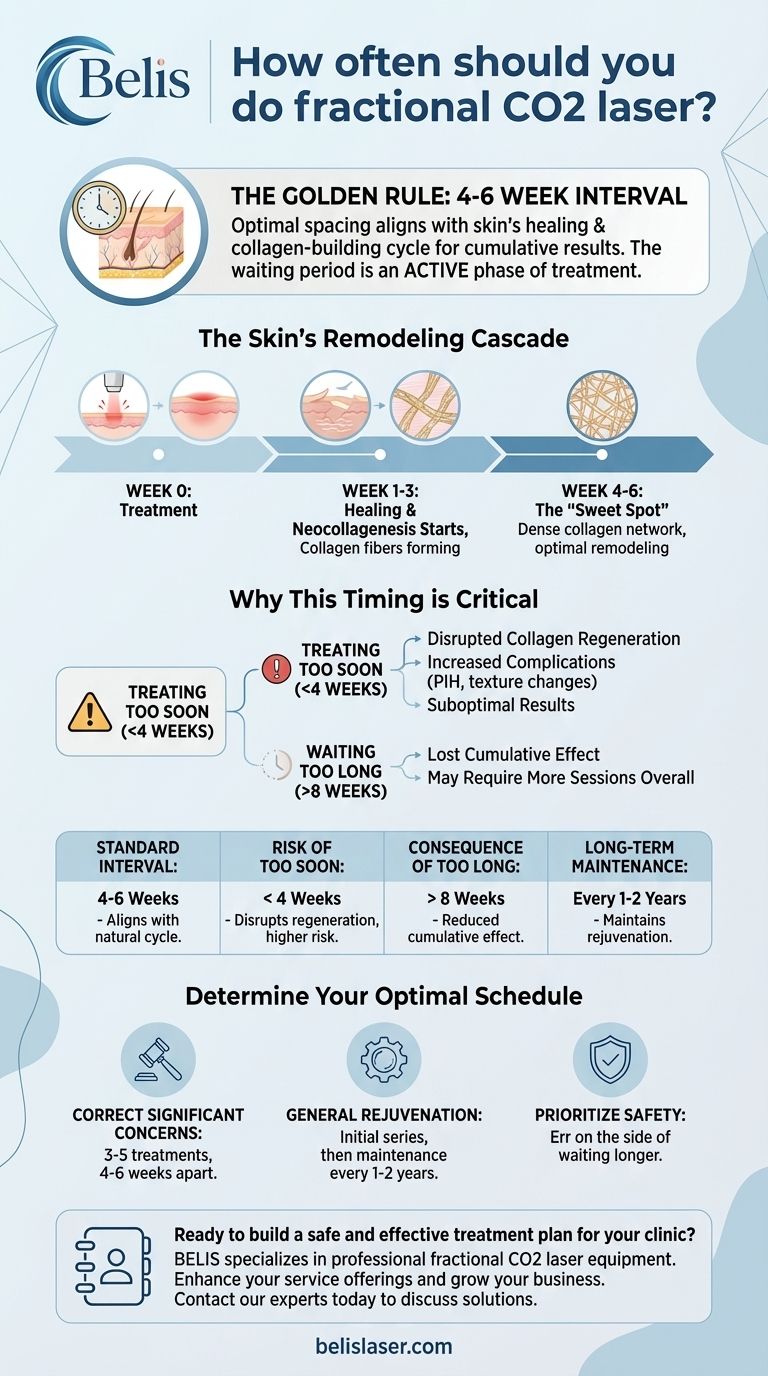
Related Products
- Fractional CO2 Laser Machine for Skin Treatment
- Fractional CO2 Laser Machine for Skin Treatment
- Pico Laser Tattoo Removal Machine Picosure Picosecond Laser Machine
- Hydrofacial Machine with Facial Skin Analyzer and Skin Tester
- Pico Picosecond Laser Machine for Tattoo Removal Picosure Pico Laser
People Also Ask
- How much younger does a CO2 laser make you look? Achieve 8-10 Years of Rejuvenation
- Is CO2 laser for all skin types? A Critical Guide to Skin Type Safety and Risks
- What does a CO2 laser do to your face? Achieve Profound Skin Resurfacing & Renewal
- How long after a CO2 laser will I see results on my face? A Timeline for Transformation
- What is a fractional CO2 laser machine used for? A Guide to Advanced Skin Resurfacing
